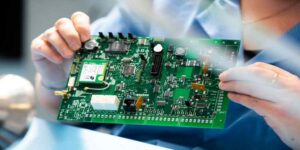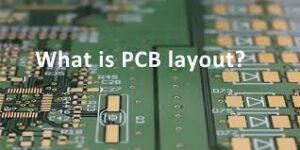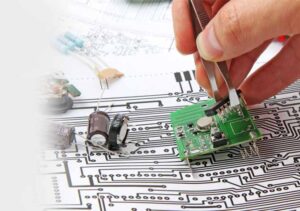As PCB size requirements get smaller and device density requirements get higher, PCB design gets more difficult.
How to achieve high PCB throughput and shorten the design time, in this Clubtech PCB design engineers talk about design tips for PCB planning, layout and routing.
The design should be carefully analyzed and the tool software carefully set up before you start wiring, which will make the design more compliant.
1. Determine the number of layers of the PCB
The board size and the number of layers to be wired need to be determined early in the design. The number of layers and the STack-up method directly affects the wiring and impedance of the printed circuit. The size of the board helps determine the lamination method and the width of the printed circuitry to achieve the desired design effect. Currently there is very little cost difference between multilayer boards and it is best to start the design with more circuit layers and evenly distribute the copper layup.
2. Design rules and restrictions
To successfully complete the wiring task, the wiring tool needs to work under the right rules and constraints. To classify all special requirements for signal lines, each signal class should have a priority, and the higher the priority, the stricter the rules. Rules regarding printed wire width, maximum number of vias, parallelism, signal line interactions, and layer limitations have a significant impact on the performance of the cabling tool.
3. Careful consideration of design requirements is an important step to successful wiring.
Design for manufacturability (DFM) rules can place constraints on component layout during optimal assembly. If the assembly department allows component movement, the circuit can be properly optimized for easier automated routing. The rules and constraints defined can affect the layout design. The automated wiring tool will only consider one signal at a time. By setting constraints on the wiring and setting the layers on which signal lines can be laid, the wiring tool can be made to do the wiring as the designer envisioned.
For example, for the layout of the power lines: ①In the PCB layout, the power decoupling circuit should be designed in the vicinity of the relevant circuits, and not placed in the power supply section, otherwise it will not only affect the bypass effect, but also the pulsating current flowing on the power and ground lines, causing tampering; ②For the internal power supply direction of the circuit, the power supply should be adopted from the final stage to the front stage, and the power filtering capacitor of this part should be arranged near the final stage; ③For some major current channels such as in the debug capacitors arranged near the final stage; ③ for some major current channels, such as in the debugging and testing process to disconnect or measure the current, in the layout should be arranged in the printed wire current gap.
Also, be aware that regulated power supplies are arranged on a separate printed circuit board when possible in the layout. When the power supply and the circuit are combined on a printed circuit board, the layout should avoid mixing the power supply and the circuit components or making the power supply and the circuit share the same ground.
Because not only is this wiring prone to interference, but it also makes it impossible to disconnect the load during maintenance, when only part of the printed wire can be cut, thus damaging the printed board.
4. Fan-out design
During the fan-out design phase, each pin of a surface mount device should have at least one over-hole so that the board can be internally connected, in-circuit tested, and circuit reprocessed if more connections are needed.
For the most efficient autowiring tool, be sure to use the largest possible vias and print lines, with a 50 mil spacing setting being ideal. Use the type of vias that maximize the number of wiring paths. After careful consideration and prediction, in-circuit testing can be designed early in the design process and implemented later in the production process.
The over-hole fan-out type is determined based on the wiring path and in-circuit testing. Power and grounding also affect the wiring and fan-out design.
5. Manual wiring and the handling of critical signals
Manual routing is and will continue to be an important process in printed circuit board design, and using manual routing helps automated routing tools do the job.
By manually wiring the selected network (net) and fixing it, you can form a path that can be relied upon for automatic wiring.
The critical signals are first wired, either manually or in combination with an automated wiring tool. Once the wiring is complete, the wiring of these signals is then checked by the appropriate engineering staff, and once the check is passed, these wires are secured, and then the automatic wiring of the remaining signals begins.
The presence of impedance in the ground can introduce co-resistance immunity to the circuit. Therefore, any points with a ground symbol must not be connected randomly when wiring, as this may cause harmful coupling and affect the operation of the circuit.
At higher frequencies, the inductive resistance of the wire will be several orders of magnitude greater than the resistance of the wire itself. At this point, even if only a small amount of high-frequency current flows through the wire, a certain amount of high-frequency voltage drop will occur. Therefore, for high frequency circuits, the PCB layout should be as compact as possible so that the printed wires are as short as possible.
There is also mutual inductance and capacitance between the printed wires, which can cause interference to other parts when the operating frequency is high, called parasitic coupling interference. The suppression methods that can be taken are: ① minimize the signal alignment between levels; ② arrange the circuit at all levels in the order of the signal to avoid the signal lines at all levels crossing each other; ③ adjacent to the two panels the wires should be perpendicular or crossed, not parallel; ④ when the board to lay the signal wires in parallel, these wires should be spaced as far apart as possible, or separated by ground wires, power lines, to achieve the purpose of shielding.
6. Automatic wiring
Wiring critical signals requires consideration of controlling some electrical parameters during wiring, such as reducing distributed inductance, etc. The quality of autowiring can be guaranteed to some extent after understanding what input parameters are available to the autowiring tool and how the input parameters affect the wiring.
General rules should be used when autowiring signals. By limiting the layers used for a given signal and the number of vias used by setting constraints and forbidden wiring zones, the wiring tool can automatically wire the signal according to the engineer’s design ideas. After setting constraints and applying the rules created, the automatic wiring will achieve results similar to those expected, and after a portion of the design is complete, it will be fixed to prevent it from being affected by later wiring processes.
The number of wiring passes depends on the complexity of the circuit and the number of common rules defined. Today’s autowiring tools are very powerful and can often complete 100% of the wiring. However, when the automatic wiring tool does not finish wiring all of the signals, the remaining signals need to be wired manually.
7. Wiring finishing
Some signals with few constraints have long wiring lengths, so you can first determine which wiring is reasonable and which is not, and then manually edit to shorten the signal wiring length and reduce the number of vias.
















